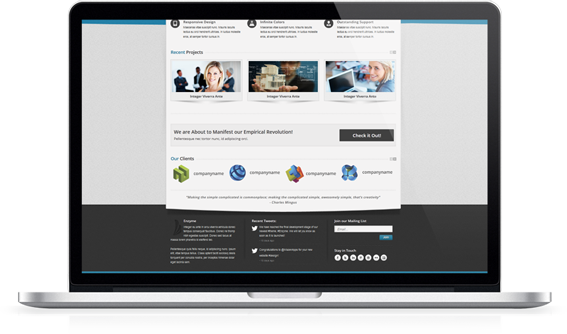NEWS TITLE HERE
There is more evidence now casting doubt on Donald Trump’s claim that he is expanding the Republican Party.
Additional data from the GOP primary shows that increased turnout in several primary states was driven largely by already active Republican voters who have historically skipped primaries and voted only in general elections.
Trump has boasted that he is drawing new voters to the political process and to the GOP. And the theory of how he might overcome the Democrats’ growing demographic advantage in key swing states where white voters are no longer dominant majoritiesrests on the assumption that nontraditional voters, many from the white working class, have been flocking to the polls for the first time in their lives in order to cast their votes for Trump.
Primary election statistics collected by Politico this week first cast doubt on that claim. And now new data — voter files combined with field polling from these states collected by a Republican data analysis firm that worked for the presidential campaign of Sen. Marco Rubio, R-Fla. — lend more weight to the conclusion that Trump’s candidacy is not game-changing, or particularly well-positioned for the general election.
There is a significant caveat to all this, an unknown that can’t be measured. Even if Trump’s support has come from traditional Republican voters, is the fact that so many individuals who don’t usually vote in primaries did so predictive of a wave of entirely new voters who will come to the polls in November?
It’s possible. The general election is a far bigger event than any one state’s primary, so participation is easier for voters who don’t follow politics as closely as those who vote in primaries.
And of course, the other significant question is whether likely Democratic nominee Hillary Clinton can turn out as many voters as President Obama did in 2008 and 2012. This, also, is a big hurdle.
What is clear is, the data so far do indicate that Trump has not yet significantly grown the Republican Party. There are small numbers of new voters who came to the polls this year, and in one state — New Hampshire — that might be enough to help Trump win. But in several other swing states — Virginia, Ohio and Michigan — if the Democrats can reassemble the Obama coalition, Trump’s new support is not enough to win.
Optimus, the data and analytics firm that worked for Rubio, focused its analysis on a few key states.
In Virginia, there was a stunning turnout in the Republican primary on March 1. More than three times the number of primary voters in 2012 came to the polls, a total of 1,025,452.
Of that total, 18.6 percent, or 190,734, were regular primary voters. But they were swamped by voters who usually only participate in general elections. That group made up 72.1 percent of the Republican primary electorate in Virginia. Younger voters who weren’t eligible for previous elections and those who moved into the state made up 3.6 percent.
Only 5.7 percent of the more than 1 million primary voters were new voters. That’s a total of 58,450 new voters.
To put that in perspective, look at the 2012 general election. In 2012 in Virginia, President Obama defeated Republican nominee Mitt Romney by almost 150,000 votes. Obama received 1,971,820 votes to Romney’s 1,822,522.
So if you add the nearly 60,000 votes to a Republican nominee, but the Democrat re-creates Obama’s turnout — which, again, is not a sure thing — then the Republican is still 90,000 votes short.
And keep in mind that the Virginia primary was one of the most closely contested in the GOP race. Trump won the state, but with only one-third of the vote. He got 356,840 votes but Rubio, Sen. Ted Cruz, R-Texas, Ohio Gov. John Kasich and retired neurosurgeon Ben Carson received a combined 657,080 votes.
Many of those Republican voters will turn out for Trump against Clinton even if they opposed him in the primary. But some number won’t.
To go further, Optimus looked at the results of almost 4,000 telephone surveys they did around the time of the primary.
Using those responses, they built a model of the Virginia electorate, and found that of the 72 percent of voters who were new to the primary but usually voted in the general election, “the vast majority” were voters who were likely to support a Republican candidate already.
This confirmed that the “new” primary voters were almost all regular Republican voters who usually just cast ballots in a general election in the fall. They are not first-time voters or traditionally Democratic-leaning individuals who crossed over.
The same dynamic occurred when 0ptimus looked at Ohio. The Buckeye State saw 1,988,960 people come to the polls for the Republican primary this year, up from 1,213,879 in 2012 and 1,095,917 in 2008.
Of those, some 53.6 percent were regular primary voters, and 36.8 percent were regular general election voters. Only 5.9 percent were new voters, yielding a total of roughly 118,000 votes.
Romney lost Ohio in 2012 by 166,000 votes, so while 118,000 new voters would get Trump closer to winning if Clinton maintains the Obama number, it wouldn’t get him over the top.
The same scenario played out in Michigan, where there were a lot of new voters this year, about 119,000. Even so, Romney lost that state in 2012 by 450,000 votes.
In New Hampshire, there were 37,000 new voters, and Romney only lost by 39,000 in 2012. That was the one state surveyed by Optimus where Trump’s primary election numbers indicated a better chance of winning there than Romney had in 2012.
But flipping New Hampshire into the Republican column would not be nearly enough to win the 270 Electoral College votes required to secure the presidency.
The authors of the paper from Optimus concluded: “The increase in presidential primary turnout should give little comfort to the GOP as it looks ahead to November’s general election.”
Follow us on Twitter - @akatechsolution
Leave a Comment
Let Millions of People know about your Product(s) / Service(s)
Target a Specific Audience on different News Categories
Our Partners
"Making the simple complicated is commonplace; making the complicated simple, awesomely simple, that's creativity"
- Charles Mingus























































